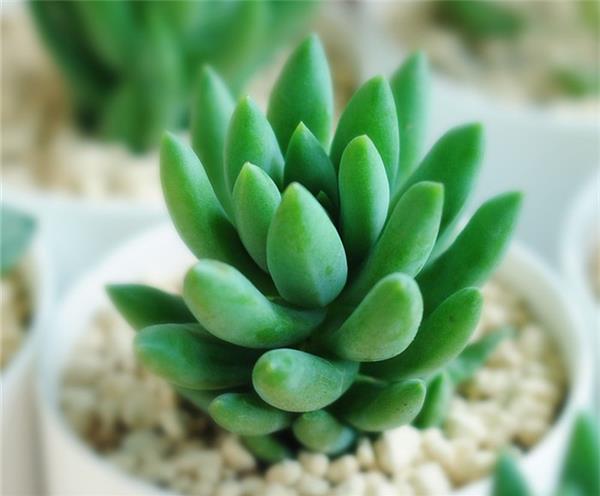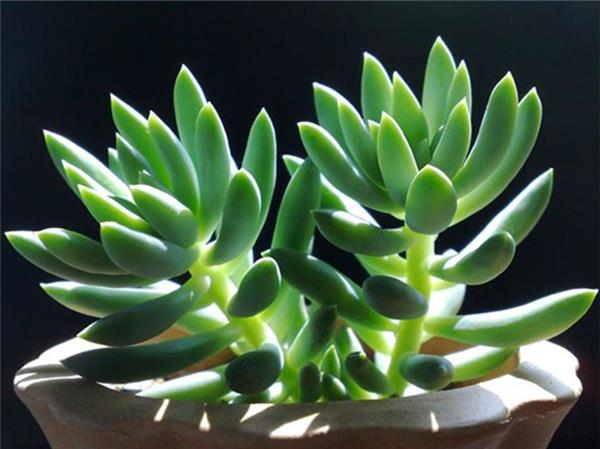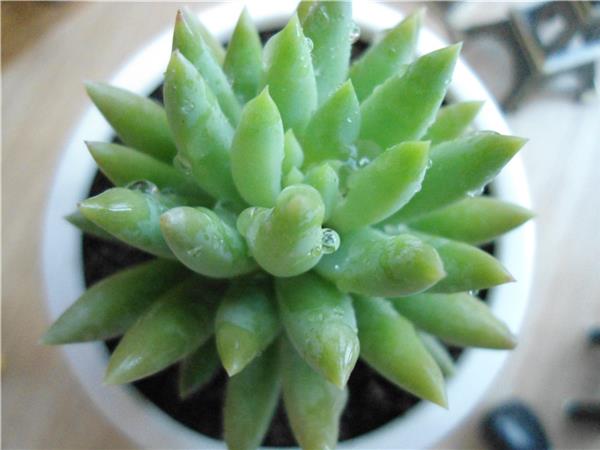1,000 points of attention
Thousand bergamot, also known as chrysanthemum pill, is also known as Wang Yuzhu curtain, but the name shows that it is a kind of plant with beautiful meaning and is deeply loved by all. Its shape is small and unique, green and juicy, but it is elegant and implicit when it blossoms. It is a kind of plant with the feelings of a little woman.
At the beginning, the bud of Thousand bergamot will be like a shy little girl, surrounded by green leaves, that is, its escort messengers. Only when the leaves open, the shy bud will come out to show you its prototype, often dressed in a yellowish coat, budding in spring and summer, inadvertently waiting for people to discover its beauty.

So how does Thousand bergamot breed? Generally speaking, there are three ways of reproduction of Thousand bergamot. The first is the most common kind of sowing. The second way of sowing is to sow. Thousand bergamot can be planted all year round, but the effect is better in spring and autumn. As long as cut off its top about 5 to 7 centimeters long branches, after drying, it can be inserted into the sand bed, usually its rooting cycle is about three weeks. There is another way called leaf insertion, which propagates faster and usually takes root in about two weeks. It is only used to break off some of the mature leaves under Thousand bergamot and put them on wet soil during the growing season. The last way is to split the plant, which requires you to cut off the small plants around it during the growing season, dry them, plant them in wet soil, and water them after a week.

Before planting Thousand bergamot, the seedlings should be selected first, requiring the root system to be developed, sturdy and branch planting period, from September to October in autumn and from late February to early April in spring. Before potting, pruning and pruning the roots to keep the fibrous roots intact. Thousand bergamot is suitable for loose, fertile, well-drained acid soil conditions, basin soil can be prepared with 60% coarse sand, 20% mature organic fertilizer, 20% field soil. It should be noted that after the thousand Buddhas put their hands on the basin, they should immediately pour thoroughly the root water.

After planting the thousand bergamot, the most important thing is the daily management and protection. Although Thousand bergamot is easy to feed, it does not blossom or only blossoms but does not bear fruit, and it is quite common that it can not bear fruit after fruit. all these are due to the lack of daily management and protection.
Thousand bergamot is suitable for maintenance in sunny windowsill or balcony, not in places with strong light or too shady. Put the thousand bergamot in a warm, ventilated and sunny position. Pay attention to the need for shade when strong light in summer to prevent exposure to the sun.
Thousand bergamot is watered once a week during the growing period, not much watering, and the basin soil is kept slightly moist during the growing period. The summer is in a semi-dormant state, and the basin soil remains slightly dry. Watering in winter depends on room temperature.
Thousand bergamot needs to be changed every 2 to 3 years, preferably in spring.
Thousand bergamot is fertilized 2 or 3 times a year. Keep in mind that excessive fertilization will lead to leaf evacuation, softness and poor posture.
In the process of growth, the over-dense bergamot should be thinned and renewed after 3-4 years of cultivation.

In addition, when raising Thousand bergamot, there are some details worth paying attention to.
After Thousand bergamot goes into the pot, we should pay attention to picking the heart of the main tip, promoting branches and dwarfing the crown. Thinning and cutting the weak branches, combined with the methods of supporting, pulling and hanging, adjust the posture of the tree and beautify the tree potential. After the result, according to the situation of growth and fruit, wiping buds in spring and summer, picking the heart of the top of the branch, thinning flowers and fruits, promoting the balance of shoots and fruits in each stage, and preventing the phenomenon of big and small years.
- Prev

[methods of flaming crane culture] matters needing attention in flaming crane culture
[methods of flaming crane culture] matters needing attention in flaming crane culture
- Next

[culture methods of Fusang] Culture methods and matters needing attention of Fusang
[culture methods of Fusang] Culture methods and matters needing attention of Fusang
Related
- Wuhan Hospital Iron Tree Blooming Result Was Instantly Frightened by the Gardener Master
- Which variety of camellia is the most fragrant and best? Which one do you like best?
- What is the small blue coat, the breeding methods and matters needing attention of the succulent plant
- Dormancy time and maintenance management of succulent plants during dormancy
- Minas succulent how to raise, Minas succulent plant pictures
- What are the varieties of winter succulent plants
- How to raise succulent plants in twelve rolls? let's take a look at some experience of breeding twelve rolls.
- Attention should be paid to water control for succulent plants during dormant period (winter and summer)
- Watering experience of twelve rolls of succulent plants
- Techniques for fertilizing succulent plants. An article will let you know how to fertilize succulent plants.

